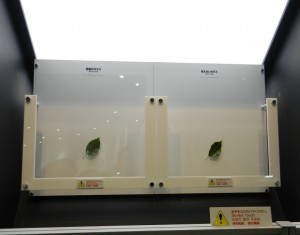
An invisible glass like the one developed by Nippon Electric Glass Co could really make a difference in how much of Sun’s rays are actually hitting the photosensitive area of a solar cell and ultimately its efficiency.
The scientists who invented the invisible glass had in mind to reduce reflections to the maximum, so that it can be used in a large variety of applications, ranging from phone screens to solar panels.
In a normal glass substrate, only 92 percent of the light passes through, while the rest is being reflected back. In the invisible glass, only 0.5 percent is reflected, while 99.5 percent of the light passes through.
The company said that the luminous reflectance of the glass substrate is 0.1% or even lower. For making the two anti-reflection films, they used more than 30 layers, each being only a few nanometers thick.
Solar panels will definitely benefit from NEG’s invisible glass. While today they still apply some anti-reflective coatings on the panels’ surfaces, the reflections don’t get diminished that much, anyway.
Source: greenoptimistic
 Follow
Follow